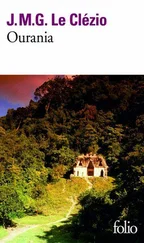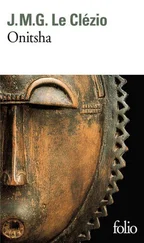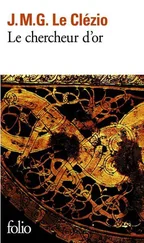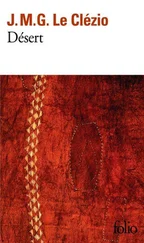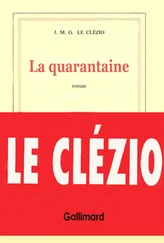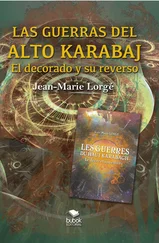Soaking wet, teeth chattering, he set off for the town of Neuss where there was a Jesuit college. After three hours of agony, he rang the bell of the college & collapsed in the porter’s arms. When he came to, he rejoiced to see his travelling companions, who had managed to cross the river at another place &, having assumed he had died, now wept tears of joy to see him safe & sound.
After three days of well-deserved rest they were fit enough again to reach Cologne without a stop. It was in that city that Von Spee had been ordained & on his advice Athanasius decided to abandon his façade of humility: even though they might offend some people’s susceptibilities, his knowledge & skill at reasoning were too important to be concealed. In a few months Athanasius completed his degree in philosophy with distinction, all the while continuing to study physics, languages & mathematics on his own. Impressed by his exceptional abilities, his teachers decided to send him to the college at Ingolstadt in Bavaria to complete his studies of the humanities & to teach Ancient Greek. In obedience to his superiors, Athanasius left Cologne toward the end of 1622, but he was sick at heart: he was leaving Friedrich von Spee behind & with him all the joy of his youth & of learning. They were never to see each other again.
Kircher spent three years improving his knowledge in numerous disciplines. Under the direction of Christoph Schreiner, whose reputation is firmly established, he studied astronomy & mathematics without respite & was soon as outstanding in them as his master. He achieved the same in physiology, in alchemy & in many other subjects, at the same time deepening his knowledge of languages. At the age of twenty-three Kircher easily outshone all his colleagues, who agreed that he had a remarkable gift of memory in addition to an inventive mind & extraordinary mechanical skills.
At that time Ingolstadt was under the jurisdiction of Johann Schweickhardt, Archbishop of Mainz and Elector of the Holy Roman Empire. Now it so happened that a delegation sent by His Grace was announced for the beginning of March. Such visits were not at all frequent and the town received the visitors with great pomp & ceremony.
The Jesuits, & Kircher in particular, were called upon to contribute to the festivities. Athanasius devised several spectacular events of his own invention that were much admired by the bishop’s delegates. To the amazement of the audience, he created optical illusions in midair, projecting fantastic shapes onto the trees in the park & the clouds — chimeras, sphinxes & dragons; he presented distorting mirrors that showed you upside down, aged or rejuvenated by several years, & concluded with a lavish fireworks display in which the rockets, as they burst, formed the imperial eagle & other emblematic animals. Accused of black magic by some simple or jealous people, Kircher had to demonstrate the mesoptic, catoptric & parastatic instruments that he had used to create the spectacle & show the legates how they worked; they were all instruments of his own invention, which he later described in detail in his Mundus Subterraneus & his Ars Magna Lucis & Umbrae . The ambassadors were so delighted with the entertainment that they insisted the young prodigy stay with them until they left.
Charmed by the reports of his envoys, Johann Schweickhardt urged Kircher to come & see him without delay. Athanasius therefore went to see the old man in Aschaffenburg & made an excellent impression on him. Immediately taken into his service, he spent a large part of his time inventing & constructing numerous curious machines to amuse the archbishop during his leisure moments. Thus he made a speaking, moving statue, which appeared to be alive, &, among other marvels, explained the miraculous properties of the lodestone, showing how it could be used to cure nervous illnesses or transmit thoughts over a distance. At the request of Johann Schweickhardt he started to write down his reflections on magnetism, which a few years later were the subject of his first book, the Ars Magnesia .
The archbishop also charged Kircher with making a topographical survey of certain parts of the principality. He took only three months to complete it & was preparing to extend the task when his patron was suddenly called to meet his Maker.
At the end of 1625 Kircher returned to Mainz to follow a course in theology there. He studied the sacred texts rigorously & assiduously, but not without continuing his scientific work. Having bought one of the first telescopes in circulation, he spent a large part of his nights contemplating the stars. One morning he shut himself away in his cell to observe the sun. Following the instructions of Schreiner & Galileo, he had placed his telescope against a hole made in the shutter of his window and put a sheet of white vellum under the concave glass so as to be able to see the image of the sun clearly on that piece of paper. As he watched the stormy sea of flames on the paper, he noticed numerous spots contrasting with it, appearing then disappearing. The sight filled him with amazement & from that day on astronomy became one of his main fields of study.
One morning in May 1628 he was scanning the shelves of the college library when he came across Mercati’s book about the obelisks erected by Pope Sixtus V. His curiosity was immediately aroused & he started to speculate on the meaning of the numerous hieroglyphs reproduced in the illustrations to the volume. Initially he took them for recent ornamentation, but on reading the book he soon learned that these figures or inscriptions had been carved on Egyptian obelisks since time immemorial & that no one had ever been able to decipher them. Put in his way by Divine Providence, this enigma was to demand twenty years of uninterrupted effort before finally coming to a happy resolution.
In December 1629, at the end of the last year of his course, Kircher was sent to Würzburg to teach mathematics, ethics & Biblical languages. It was at that college, where I was starting my noviciate, that I met him for the first time.
Sitting in our classroom, my fellow students and I were waiting for our new mathematics teacher, a certain Father Kircher, who had been greatly praised, but of whom we were already making fun, biased against him because of his excessively high reputation. I remember that I was not the last to snigger at him, outdoing the others in ironic remarks about this ‘Father Churcher’ coming down from the heavens with his extravaganzas. However, when he came in & ascended the rostrum silence fell without him having to utter a single word. Father Athanasius was twenty-seven & if ever a face showed the harmony that arouses immediate attachment, as if by sympathy or magnetic attraction, then it was his: a noble and intelligent forehead, a straight nose such as you can see on the David of Michelangelo Buonarotti, a finely delineated mouth with red lips & the faintest downy shadow of an incipient beard — which he kept trimmed very short throughout his life—&, below thick, almost horizontal eyebrows, big, deep-set black eyes with the fascinating sparkle of an inquiring mind, always ready for repartee or debate.
He introduced himself to us in Latin worthy of Cicero & began a lesson the least details of which remain imprinted on my memory. The subject of that lesson was to work out how many grains of sand the Earth contained, supposing that was what it was made of. Kircher walked along the rows of desks, giving each of us a pinch of sand that he took out of the pocket of his cassock & having done that told us to draw a line in our exercise books a twelfth of an inch long. Then he instructed us to place as many grains of sand side by side on the line as it would take: we were amazed to see that each time the line contained exactly 30 grains of sand. Following on from this experiment, which he assured us could be repeated with all the grains of sand that might be found throughout the world, he proceeded with his demonstration. If we imagined a sphere a twelfth of an inch in diameter, it would contain 27,000 grains of sand; a sphere one inch in diameter would contain 46,656,000, one a foot in diameter 80,621,568,000, one a league in diameter 272,097,792,000,000,000,000, hence if the whole Earth consisted of grains of sand it would contain 3,271,512,503,499,876,784,372,652,141,247,182 & 0.56 for it is 2,290 leagues in diameter & contains 12,023,296,769 & 0.3 spheres a league in diameter …
Читать дальше



